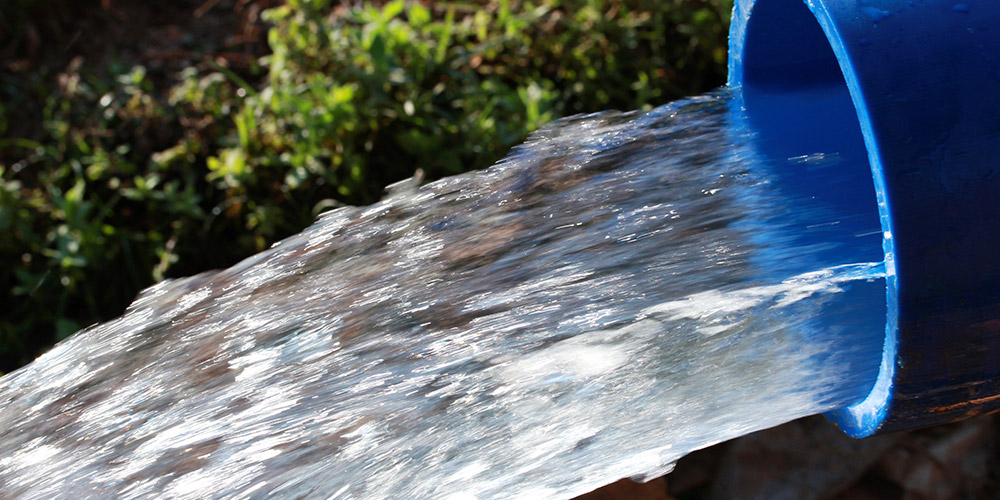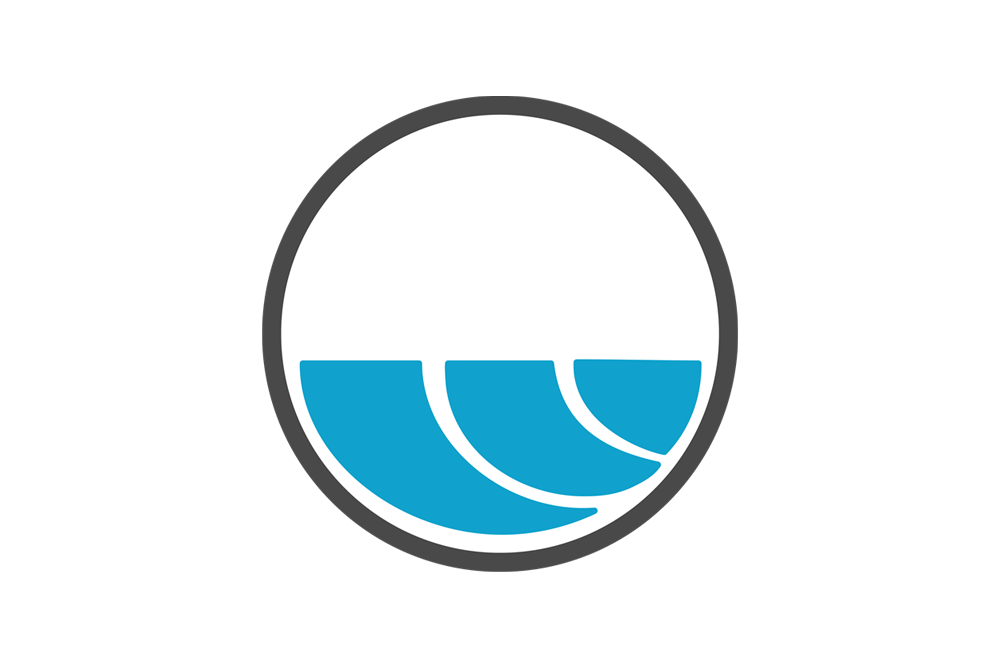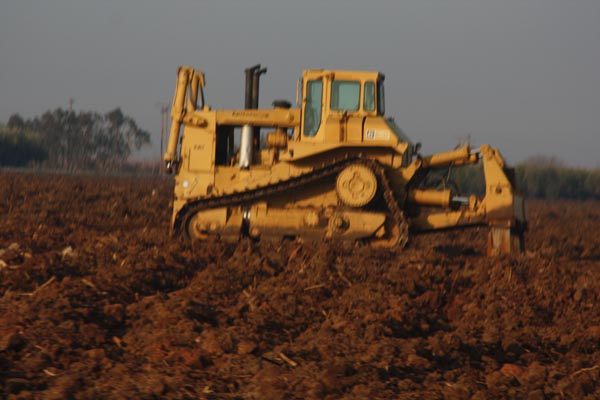The Kaweah Delta Water Conservation District held its Tuesday, January 2, 2018 board of directors meeting at its Farmersville headquarters. This is the first report of a new year; there’s rain in the forecast, of all the insane new laws in California nothing exceptionally onerous to water deliveries kicked in – at least as far as I know. There is a spirit of optimism this year and I base that on the fact the room wasn’t as full today as it has been during tougher times. Chairman Don Mills called the meeting to order at 9:00 am and KDWCD General Manager Mark Larsen only had one announcement and I quote, “Happy new year.”
There were no public comments and the consent calendar was passed. The water supply report wasn’t particularly good. Precipitation is down for this time of year but often a dry fall leads to a wet winter. On the Central Valley Project side of supplies a preliminary declaration is traditionally given at the end of this month. Larsen reported on Friant Water Authority happenings saying FWA CEO Jason Phillips has been working diligently to spread the word about how important the subsidence on the Friant Kern Canal is and how much it needs to be focused on. He was also happy to say Fresno Irrigation District and Madera ID have rejoined FWA. Director Chris Tantau said FWA is doing a good job of prioritizing things such as the subsidence, taking of O&M on the canal from the US Bureau of Reclamation and Temperance Flat. Engineer Dennis Keller has been attending meetings of the Temp Flat MOU. He said the benefits and obligations of being a Temp Flat MOU member was discussed. There were 11 applications for Prop One grant money presented before the California Water Commission and DWR staff is scoring the applications. There is a JPA already formed for the support of Temp Flat and how it and the MOU group meld will be an interesting study. Keller sounded optimistic. He said the consulting engineering firm Stantec is looking into answering several questions. Taking grant money could also obligate the new yield from the dam to public use. If the dam is privately funded in all or part there will be much more flexibility for the use of new water supplies. Crunching those numbers will help make the determination of how to invest. Director Brian Watte asked if any of the 11 projects could be kicked out. Keller said he wasn’t sure if a project could be kicked out of the process but they certainly could come away empty handed. Keller also said FWA doesn’t have a contract for water and there are questions about that. The other seats at the MOU table are occupied by contractors. Tantau, who also sits as a Friant director said this is more about protecting the FWA members by representation. Keller said the public has no entitlement to the San Joaquin River as it is fully appropriated. He asked how the public can claim a portion of a cold temperature pool but not have a way of accounting for evaporation. There are many moving parts and just the forest of applications mandated by the fish agencies when public funds are involved takes a computer model to figure out.
Next Larsen updated the board on the 2017 Groundwater Report. KDWCD staff annually studies and quantifies the groundwater in the district. Since 1970 the average depth to groundwater has dropped 60 feet as of 2016 because there have been more dry years than wet and the use of micro irrigation has changed the contours as well. Flood irrigation brought much more recharge to the area but micro irrigation brings better yield to crops. As Mills pointed out the contracted supplies to the Southern San Joaquin Valley have been reduced by more than one million a/f while more acreage has been put into production. Things are somewhat encouraging as better recharge awareness and other methods will help slow down a catastrophe before it wipes out the aquifer.
Recharge Construction
Speaking of recharge KDWCD has three big projects going on: the Oakes Basin, Paregien Basin and the Hannah Ranch South Project. Keller reported to the board progress being made. Permitting for the first two projects is coming together. Larsen reported the Hannah Ranch project has to remove a great deal of dirt. The district has had to purchase more equipment to keep up. A fuel truck was needed and they are new scrappers for instance. Larsen said the learning curb for a job this big has been steep but the crew is rising to the occasion. Keller remined the board the DWR grant doesn’t have any provision for extending time. Due to the limitation imposed by the Smog Nazis, I’m sorry I mean the Air Quality Control Board on the project the schedule is falling behind – I think it’s not how much dust is kicked up but how often. In other words the faster you go the more the dust is raised but it lasts shorter. Larsen said the reasons for the schedule problems are explainable and he believes DWR can be persuaded to take that into account and successfully negotiate an extension of some form palatable to both parties. Keller said if KDWCD and the Air Board sit down board to board to discuss how this project doesn’t fit the model the Air Board is using. If I understood the Air model doesn’t allow for as many variables to be plugged in as a water model would. There are different engine types on different pieces of equipment to consider as well as mileage on and off road and such. One of the big considerations the district is looking at is to purchase or rent/lease equipment and do the job itself or have it hired out. An earthmoving company came up with an estimate and this was compared to the district’s DIY estimate. Mills thought it would be good to know what changes the contractors would factor in if this was an actual bid rather than an estimate. The figures were both close to $9 million but the contractor could get the job finished much faster. There is also the mix of the district purchasing the equipment but that gets even more complicated with who is responsible for maintenance and other concerns. Larsen recommended getting more bids. He said it will require the district to hire much more skilled staff. All of this could trigger a new environmental impact report and attorney Aubrey Mauritson said that is also being evaluated. The board directed Larsen to put it out to bid.
The next item was a report on the Terminus Dam power project. The Army Corps of Engineers can operate the gates and KDWCD doesn’t own anything in the old tower any more. Staff said he believes some of the agreements will need to be rewritten. He’s concerned about repairs and maintenance being completed in a timely manner – in particular. Looks like that could be worked out by allowing the district to complete those tasks. A submersible camera will take a close, underwater view of the intake. There is concern about debris accumulating around the refurbished area.
GSA
Larsen reported last month the Greater Kaweah GSA approved five contracts with GEI Consultants and this triggers the development of the GSP. The GKGSA is looking to hire a permanent manager. KDWCD will still continue to help but the district needs its Larsen back. There’s also a website now. There are DWR grants available for funding GSPs and the Greater Kaweah is applying for a share.
Moving on there has been progress in enlarging Lake Kaweah. The Army Corps had to explain to the State of California why it was included in the project. That was done and things are finally moving forward after a 12-year effort to close out this project and get the reimbursements in the right hands. The Corps project manager is named Katie someone and this is her second round in that position and she was the best one both times. The next meeting will be February 6th.
The meeting then went into closed session.
DISCLAIMER OF RESPONSIBILITY; Waterwrights.net strives to provide his clients with the most complete, up-to-date, and accurate information available. Nevertheless, Waterwrights.net does not serve as a guarantor of the accuracy or completeness of the information provided, and specifically disclaims any and all responsibility for information that is not accurate, up-to-date, or complete. Waterwrights.net’s clients therefore rely on the accuracy, completeness and timeliness of information from Waterwrights.net entirely at their own risk. The opinions expressed in this report are those of the author and do not represent any advertisers or third parties.
ALL RIGHTS RESERVED. Copyright 2018 by Don A. Wright No part of this publication may be reproduced, stored in a retrieval system, or transmitted in any form or by any means, electronic, mechanical, photocopying, recording, or otherwise, without the prior written permission of DAW.
Kaweah Delta Water Conservation District
2975 N. Farmersville Blvd.
Farmersville, California 93223
559/747-5601
Board of Directors
Don Mills – President, Chris Tantau – Vice-President, Ron Clark, Stan Gomes, Jeff Ritchie, Mike Shannon & Brian Watte
Management
Mark Larsen, General Manager – mlarsen@kdwcd.com
Terry Stafford, Facilities Manager -tstafford@kdwcd.com
Dian Rader, Administrative/HR Coordinator – drader@kdwcd.com
Larry Dotson, Senior Engineer – ldotson@kdwcd.com
Shane Smith, Projects/Administrative Manager – ssmith@kdwcd.com
Office and Field Staff
Chemical Applicator/Equipment Operator – Jim Mudford
Equipment Operators – Jesus Sandoval, Chris Bell & Tommy Crosswy
Equipment Operator/Mechanic – Ryon Van Essen
Hydrographer/River Operator – Jose Rivas & Rick Avila
Water Master – Victor Hernandez
Senior Equipment Operator – Tom Dilbeck & Doyle Pettyjohn
Accountant – Shelly Heier
Administrative Assistant – Kim Hollis
Board Coordinator – Anita Wilson
Office Assistant – Kathleen Halvorsen
Engineering Technician – Matthew Jacobus
Primary Consultants
Bruce George – Special Projects Consultant
Dennis Keller – Civil Engineer (Keller/Wegley Consulting Engineers)
Aubrey Mauritson – Attorney (Ruddell, Cochran, Stanton, Smith & Bixler, LLP)
Richard “Dick” Moss – Civil Engineer (Provost & Pritchard Consulting Group)
Shelley Orth – Editor/Wordsmith
From the Kaweah Delta website:
The Kaweah Delta Water Conservation District (KDWCD) was formed in 1927, under the provisions of California state law known as the Water Conservation Act of 1927, for the purpose of conserving and storing waters of the Kaweah River and for conserving and protecting the underground waters of the Kaweah Delta. Later the Water Conservation Act, as well as the purpose of the District, was expanded to include power generation and distribution.
The District is located in the south-central portion of the San Joaquin Valley and lies in portions of both Tulare and Kings Counties. The total area of the District is about 340,000 acres with approximately 255,000 acres located in the western portion of Tulare County and the balance, or 85,000 acres, in the northeastern portion of the Kings County.
The Districts lands are primarily agricultural in nature, although the cities of Visalia and Tulare constitute significant areas of urbanization. Farmersville is the other incorporated area. The population of the District is currently estimated to be in excess of 175,000 people with the principle crops being cotton, misc. field crops, deciduous fruit and nut trees as well as alfalfa.
Numerous public and private entities within the District’s boundaries divert water from the Kaweah River and its distributaries. Nearly all of the lands served with Kaweah River water also are served irrigation water from groundwater, primarily due to the erratic and relatively undependable nature of flow on the Kaweah River. All municipal and industrial water uses within the District are supplied from groundwater.
KDWCD and Tulare Irrigation District (TID), which lies entirely within the boundaries of the Kaweah Delta Water Conservation District, has a long-term contract with the federal Central Valley Project (CVP) for water from the Friant Division of the CVP. TID has historically received substantial quantities of CVP water surplus to the demands of the District which augment the Kaweah River supply.
The District and the Kaweah River groundwater basin have experienced long-term groundwater overdraft estimated in 2007 to be as much as 40,000 acre-feet per year. The District has performed multiple studies of groundwater data to determine the extent and volume of groundwater overdraft within its boundaries. There are currently over 40 recharge basins within the District covering approximately 5,000 acres. While KDWCD owns and operates many of these groundwater recharge basins, it does not provide water banking services for others































